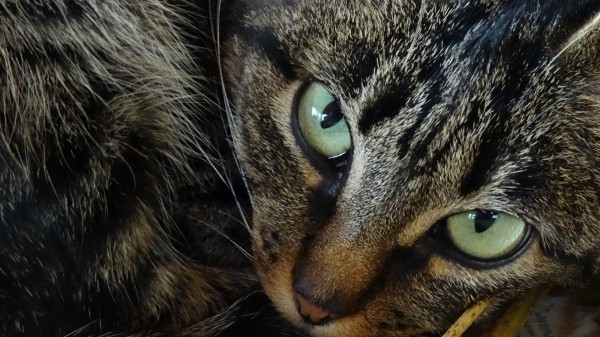There is some debate about the exact percentage of cats that suffer from Feline Diabtes. Numbers are estimated to be between 0.5% to 2% of all cats or one in 400 to two in every 100 cats.
Feline Diabetes is generally considered to be under-reported, and the percentages are probably higher.
There is one point, however, around which there is no debate:
The number of cats suffering from Feline Diabetes is clearly on the increase.
The Role of Glucose & Insulin
Glucose is the body’s fuel, the source of energy that allows the cells to function.
When food is eaten (by your cat or you), it is primarily broken down into glucose. The glucose then needs to enter the cells to act as their energy source.
Insulin is the “key” that unlocks the cells, allowing the glucose to enter them to be used.
Insulin is secreted by the beta cells in the islets of Langerhans in the pancreas.
Feline Diabetes: Lack of Insulin or Insulin Resistance
Feline Diabetes occurs when there is either none or insufficient insulin being created, or when the cells become resistant to insulin. The glucose cannot enter the cells, and builds up in the blood, then spills over into the urine. Without its normal source of energy, the body starts breaking down muscle and fat.
Left untreated, the high glucose blood levels lead to nerve and organ damage and can lead to life-threatening conditions such as a Diabetic Ketoacidosis (DKA).
Feline Diabetes though is absolutely NOT a death sentence!
Feline Diabetes CAN be treated: with insulin therapy, the right diet and the right dosing protocol your cat can live a long and happy life and can even go into a diet controlled remission where insulin is no longer needed.
Different Forms of Feline Diabetes
As for humans, Feline Diabetes is described as Type 1 or Type 2. Recently, in August 2017, a new type of Diabetes – Type 3c – has been described, which is probably also affecting cats. It may also be a secondary effect of a primary disease or as a result of medical treatment:
- Type 1 Diabetes
- A result of the destruction of the insulin producing beta cells in the pancreas
- No or very low levels of insulin are produced
- Type1 is very rare in cats
- Type 2 Diabetes
- A result of insulin resistence (possibly coupled with some impared insulin production by the pancreas): insulin is being produced, but the body’s cells do not react to it as they should
- Most cats are Type 2 diabetic
- Type 3c Diabetes
- Newly identified in humans in August 2017, this type of diabetes is certainly affecting a number of cats¹
- Type 3c Diabetes is a result of damage to the pancreatis due to pancreatitis (common in cats), a tumour in the pancreas, or pancreatic surgery
- Type 3c Diabetes is often connected to poor regulation
- Digestive enzymes can be beneficial
- Secondary Effect of a Primary Disease or Medical Treatment
- Pancreatitis can lead to damage of the insulin producing beta cells causing and/or aggravating feline diabetes
- Endocrine disease can lead to insulin resistance:
- Acromegaly, in which a pituary tumour leads to excess production of growth hormones, can lead to extreme insulin resistance
- Cushing’s Disease or Hyperadrenocorticism is a disease in which the adrenal glands secrete high amounts of cortisol, a “natural” steroid
- Hyperthyroidism
- Medical Treatments such as the use of steroids (prednisone, for example)
The Tight Regulation Protocol can help you help your cat no matter which type of diabetes your cat is suffering from. Join us on the Diabetic Cat International Forum for more help and information!
DCI FORUM
Associated articles:
¹ Incidence, Demographics, and Clinical Characteristics of Diabetes of the Exocrine Pancreas (Type 3c): A Retrospective Cohort Study.
© Diabetic Cat International 2015 – 2022

